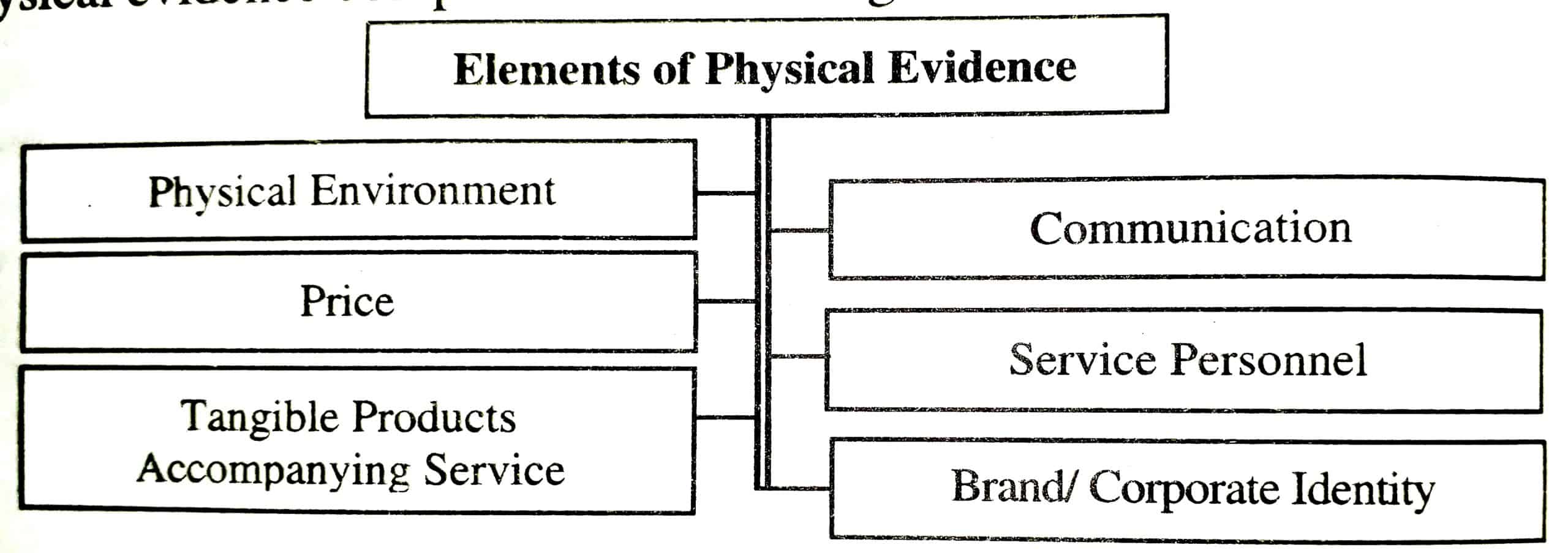Physical evidence comprises the following elements:
Physical Environment
The physical surroundings or the service environment also play a major role in determining if the consumer will avail of the service again. The physical environment comprises the following factors:
Layout
The layout refers to the physical arrangement of the service elements. The service specifications should afford comfort and well-being to the customers.
For example, the seating arrangement should be such that the customers feel comfortable while sitting especially in case they need to wait for a while to be attended to. There should not be unnecessary obstacles.
Atmosphere
The atmosphere in which the service experience is enacted also has a big impact on the customer. The atmosphere includes factors like lighting conditions, sound levels, fragrance, touch, etc.
The service set-up should, therefore, employ adequate lighting. The effective use of music can also be done to create an amicable service atmosphere.
For example, in most restaurants, beauty salons, and spas, light music is played to enhance the service environment.
Ambience/Aesthetics
The ambience of the service environment also plays an important role in influencing a customer’s decision to avail of the service again.
For example, many palaces have been converted into hotels in India. This has been done to create the right ambience of grandeur and luxury for the customers.
Communication
Physical evidence also involves communication factors. Every firm needs to effectively communicate with its customers about the services, their use, and methods for using these services.
For example, in shopping malls, retail stores, and multiplexes, customers should be provided assistance in order to locate the items they want to buy.
This can be done through the effective use of signboards or by placing employees in prominent places to guide the customers.
Price
Price is another element of the service’s physical evidence. The price charged for service by the service provider is used as a quality indicator by the customers.
Normally when the service is charged a premium price then the customers also have higher expectations from the service in terms of quality as compared to when it is priced lower or average.
However, the maximum price that can be charged for a service is not limitless.
Service Personnel
The behaviour, etiquette, and appearance of the service personnel rendering the service also have an important role to play in enhancing the perception of the customers regarding service quality.
This becomes a crucial part of the services’ physical evidence. Therefore, the service providers should choose an appropriate dress code for the service staff. Cleanliness should be given preference.
The staff should be well-dress in a tidy, neat, and clean uniform. Body odour, clean-shave, tidy hair, etc. are some of the other important factors for a good appearance. Customers often take these factors as indicators of service quality.
Tangible Products Accompanying Service
Service providers also tend to offer tangible products to customers to enhance their service experience.
For example, hotels offer welcome drinks, bouquets, or chocolates to their valued guests. Even hospitals are practising this to make their patients feel good.
Brand/ Corporate Identity
Corporate identity or brand also acts as a tangible element for the service firm.
For example, people generally have greater trust in company service outlets (Such as Bosch, Mahindra, Hyundai, and Maruti) rather than a local mechanic practising himself in case of car servicing.
This is not because the mechanic will not be capable of providing efficient service, but because he lacks brand value which provides deeper trust to the customers.
